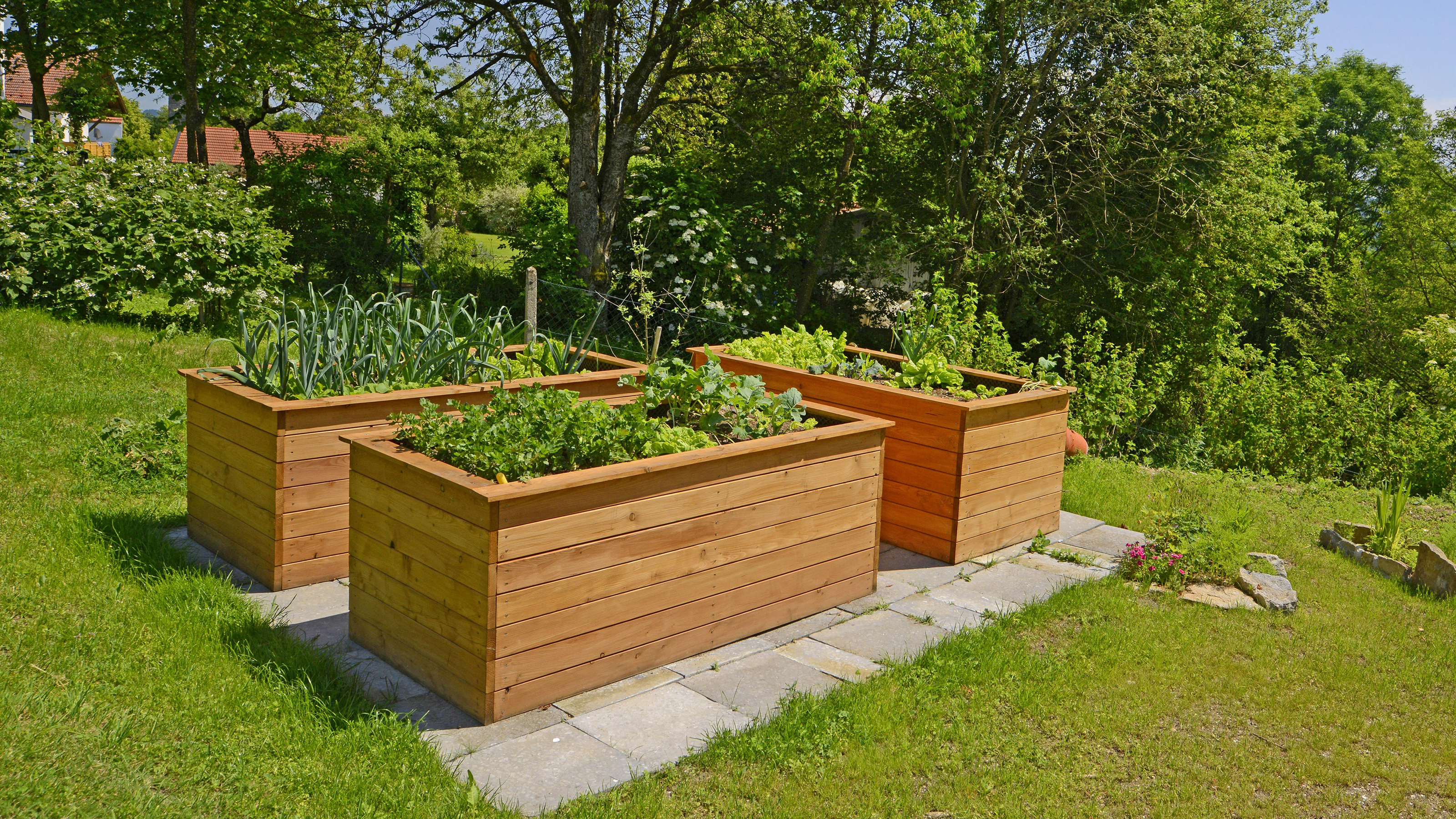Best Place To Put A Raised Garden Bed - Choosing A Location For Raised Beds
Garden bed plans must consider location. A raised bed layout should take into consideration all plant factors as well.


Whether you want to plant hostas, vegetables, or ornamentals, garden bed plans must consider location. Planning your raised garden bed properly enhances plant growth and ensures each variety gets the light, moisture, and mature space it needs. Considering where to position raised beds can also reduce pest issues, nutrient deficiencies, and ease your workload.
Plants have very specific requirements, depending upon the variety. Placing plants in sites where they do not receive enough light, for instance, can limit growth and productivity. Similarly, putting plants where the soil is too soggy -- or too dry -- will affect overall health. A raised bed layout needs to take into consideration all plant factors. These can be found on the seed packet or plant tag.
Where to Position Raised Beds
The best place to put a raised garden bed relies on a host of factors.
- sunlight
- soil porosity
- soil texture
- soil nutrient levels
- soil pH
- wind exposure
- moisture availability
- previous pest issues
- distance from home
- proximity to trees
- microclimates
Evaluating a site prior to planning your raised garden bed will help prevent future issues that can throw off plant health, or simply make tending the bed arduous. Sketching out a plan is a good start, as is noting the amount of sunlight throughout the day.
Tips on Garden Bed Plans
Once you have taken into consideration all the factors, there are some situations that you can mitigate. Soil health is a big concern, but fairly easy to amend. Low nutrient soils benefit from organic materials or slow release fertilizers. Those that don't drain well will percolate better if gritty material is worked in prior to planting. Soil pH may be adjusted with either lime or sulfur. A soil test will tell you which needs to be added to either sweeten or acidify soil. Target soil pH levels are between 6.0 and 7.0. If the raised bed layout will be far from a water source, install drip lines to moisten each plant.
Planning Your Raised Garden Bed
After identifying the best place to put a raised garden bed, it is time to build. Many gardeners simply mound soil as a quick raised bed, but over time it will usually erode, and moisture applied topically can roll off the bed. Bordering the bed somehow keeps the soil inside the site and helps water retention. Borders don't have to be fancy. Items like old bricks or cement blocks, wood, rocks, or logs are easily available and inexpensive. A galvanized steel container, or even a rubber tote, will make quick raised beds if you drill holes in the bottom for drainage. Plastic crates are another material that can be fashioned into raised beds. They even have enough drainage areas already in their design. After you have built your bed, get growing!
Sign up for the Gardening Know How newsletter today and receive a free copy of our e-book "How to Grow Delicious Tomatoes".

Bonnie Grant is a professional landscaper with a Certification in Urban Gardening. She has been gardening and writing for 15 years. A former professional chef, she has a passion for edible landscaping.